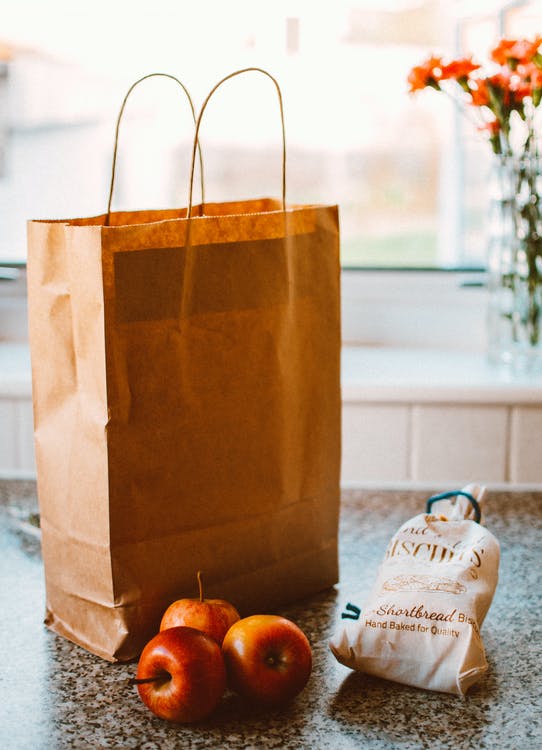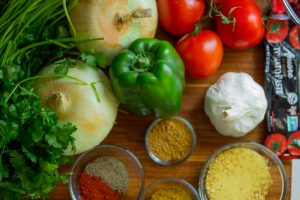
Save Money, Eat Healthy, Enjoy Food
Saving money on groceries is something everyone can do with a little planning. Eating a healthier diet on a budget isn’t all that hard.

 One of the ways I have learned to save money on groceries for my family while increasing the number of organic, all-natural and healthy foods my family eats is to learn how to prepare food at home differently. Not only can I save money while eating better now, but I actually save time too.
One of the ways I have learned to save money on groceries for my family while increasing the number of organic, all-natural and healthy foods my family eats is to learn how to prepare food at home differently. Not only can I save money while eating better now, but I actually save time too.
For months now, I’ve subscribed to a menu service called emeals.com where the chefs offer a planned weekly dinner menu, complete with the recipes, shopping list, and everything you need to plan your weekly dinners, without having to search websites, make your own lists and plan your own menus. Okay, sure, I tweak the menus, add my own flare or my family’s likes and dislikes to it, mix and match a bit, but this subscription service has helped e plan for my weekly grocery shopping in a way I haven’t before, and it’s saved me money.
Shop in Bulk
The best tip I learned from subscribing to this service is that when you plan your weekly meals, if you plan to use a similar ingredient throughout your meals that week, you can buy that main ingredient in bulk and save a lot of money.
For example, if chicken is your main meat for the week, you can buy organic chicken whole and use different parts of it for different meals. Perhaps one day, you make a chicken ceasar salad while on another day you serve BBQ chicken wings. Then you can make broiled Asian chicken thighs another night and grilled chicken breast with an orange or raspberry sauce another night.
Cook Once, Eat Multiple Times
My family frequently will order grass-fed beef from local farms in bulk, 50-250 pounds of beef at a time. If you have a good deep freezer, this is the absolute best, most economical way to buy quality, healthy beef, and save money.
One a weekend when we’re all hanging out by the pool, we’ll fire up the grill and cook a lot of the meat in advance, grilling it to the point that it’s almost cooked ready to serve but not quite. Then we’ll let the meat rest and cool, and then seal it in the vacuum sealer (which we bought for less than $50-and it has saved us countless of dollars-a great investment). The sealed, cooked packets can then go in the freezer and what you have is a piece of meat that is cooked with all the flavor of the grill but that will only take you about 10 minutes to defrost and heat up in a pan (or the microwave, if you must), and you have a finished main course with very little work.
To make different dishes from this, you simply need to pick out your pre-cooked meat, cut it, cook it, add sauces to it, add it to your recipes, whatever you need to do with it, but you cut your time considerably because the meat is already cooked. On the day we do the pre-cooking, we’re usually eating steak that we were going to put on the grill anyway, so the extra time to cook the rest of the meat and put it in the vacuum packs isn’t much more than it usually takes to clean up. Plus, you only have to clean and prep the grill one time for multiple meals instead of before and after each meal.
Sauces and Bases
Another thing I like to do in bulk is stocks, sauces and bases. Most of these can be frozen in small containers or plastic baggies in the freezer for quite some time (months or longer), but you can make them fresh, with whole, healthy ingredients, instead of the pre-packaged convenience items that are full of preservatives and sodium and other bad things. Find a day when you have some time, chop and dice once, cook several sauces or stocks at the same time, then store them together.
For thicker sauces and soup bases, you can store them in Ziploc style bags and simply put them in a warm water bath to defrost. For thinner ones, find sealable plasticware to store your items in the freezer. Just be sure to label things, because sauces are hard to identify once they’ve been frozen. Just be sure to freeze them in small enough portions that you won’t have to heat and re-heat the same portion over and over, because this ruins the flavor, healthiness of the food, and can actually make people sick.
Repurpose Leftovers, Spices Galore!
Instead of just eating the same leftovers the same way you cooked them, learn to repurpose them. One night, I served white beans with a vegetable broth as a side dish with some free-range, organic chicken and basmati rice. I had some leftover chicken, rice and beans, so I shredded some of the chicken, tossed it all into a pot together, added some chopped carrots, celery and onions, then tossed in the rice and the beans to make a hearty chicken soup. The only ‘prep’ I had to do for the second meal was chopping the veggies, and my family didn’t even realize it was the same meal from before.
The next night, with still having some white beans left, I took them and some coconut oil, some cumin, coriander, red pepper, turmeric and paprika, and refried the beans and mashed them with the spices. I spread the refried spiced white beans on tostada shells, chopped up some fresh veggies on top, a little shredded raw goat’s milk cheddar cheese from a local farm and some fresh salsa. My family loved these tostadas, and I really didn’t have to cook anything that day, because it was already cooked. Just reheated and mashed the beans.
Use your imagination and instead of just eating your leftovers the same way you cooked them the first time, repurpose them. It will keep you from getting bored with the same foods, save you money because you’re using all the food you’re cooking, and it challenges you to get creative-but most importantly, it saves time in cooking too, while your family will still love the food as though you had slaved over it again.